We had decided we would go back to Geraldton via 'Woodlands Farm', so before we left Northam we sent a text message to family members requesting a powered site for two nights. We had some lovely messages back. Nic said "We should get together for dinner and Ella had asked sometime ago, if we were going to have a party when Nan & Pop got back"? It was time to get that last bottle of Peter's birthday wine out from under the bed! It is well travelled, something like 22,000 kilometres! I made an adjustment to the label though, before it went into the car fridge. It is now named 'In the Middle of Somewhere' rather than 'Nowhere'! Woodlands Farm may have been referred to over the years as one of those 'Nowhere' places, but it is and has been looking at its very best this year. The wildflowers have been beautiful and the crops some of the best ever grown.
We hit the road again before 9.00am, travelling from Northam to Goomalling. The hay crops around Northam were excellent. Lots and lots of hay bales in the paddocks. Our morning tea stop was at the Konnongoring Hall to find another of those caches. We have 18 smiley faces and before we get home we want to have 20. This one took us a while, but we were well hidden from the road and with the help of Peter's LED head light and after scrolling through the attributes, we were onto it!
Konnongorring: Before we left I took a photo of the hall and noticed there was a defibrillator near the front door. This little hall would not be used very much these days, but obviously the community saw the need. The town was gazetted in 1897 and all that remains today is the hall, a CBH receival site and a church that is used by the Anglican and Uniting Church. There is a lovely Catholic Church on the Goomalling side of Konnongoring, that was built in 1929. Services were held in the church until 1974 and some years later the quaint Romanesque style building was sold and converted to a private residence.
Wongan Hills: We found and logged that number 20 smiley face at Wongan Hills and the fact we had decided to look for the cache, made us stop and look at the heritage machinery. We have travelled this road so many times, but we can't say we have ever looked at the town with tourist eyes. Today we sort of did, but sometime we need to go to the newly developed lookout on Mount O'Brien. It is reported to provide a panoramic view of almost the whole shire. Mount Matilda is nearby with a number of walking trails. This year the wildflowers would have been magnificent. We did actually stay the night at the Wongan Hills Caravan Park four years ago. When travelling to Wongan Hills from the coast, I have always thought the views of the Wongan Hills are quite lovely.
The Shire of Wongan Ballidu cover 3,368 square kilometres and is the centre of the Western Australian Wheatlbelt. Surveyor General John Septimus Roe discovered the district in 1836, seven years after the founding of the Swan River colony. However, until the turn of the century the only white men to visit the area regularly were Benedictine Monks from New Norcia shepherding their flocks of sheep, and sandalwood cutters. The first settlers arrived in 1905. In 1909 the first store was opened, but it wasn’t until 1911 that the town site was officially proclaimed when the railway line was opened to traffic. Two years later the first school commenced, and in 1916 local government was established. The Wongan Hills name originates from the Aboriginal name 'Wongan Katta', which translates to 'Talking Hills', referring to the wind whispering through the hills. The 2016 census recorded that there were 898 people living in Wongan Hills.
Pithara: It does not appear that anything much happens in Pithara these days, apart of the delivery of grain. There was roadworks on the Great Northern Highway through Pithara, so it was too difficult to stop for a photo of the old hall. In 2011 the population was 257, a 25% drop from the 2006 census, and one would presume that would be including the surrounding farming community. The Pithara Tavern still operates and one of the towns claims to fame is that Shirley Strickland, Olympic Gold Medalist of the 1948 and 1952 games grew up on a farm at Pithara.
The road from Wongan Hills to Pithara has not improved any since we last travelled it. It is still a very narrow section of bitumen. Thank goodness we had just gotten off the road for an oncoming truck and were not going very fast, when we found a woman heading towards us on the wrong side of the road. 'Thank Goodness' as well that she saw us in time and that she did not lose control of the car when she whipped it back to her side of the road.
Ballidu: There has always been an active little community at Ballidu, but with farms increasing in size and less families in the district, the school closed in December 2016. It was the 'States Smallest School' with only five students, and they were in the years between Kindergarten and Year 1. The parents decided to relocate their children in 2017 to Wongan Hills 38 kms away. The bikes on the highway were an attraction to stop for a quick photo shoot, but not the cache this trip.
Dalwallinu: We stopped at Dalwallinu for lunch and visited the local bakery for a pastry once again. We told ourselves "It would be the last one for sometime"! The 'We Will Remember Them Anzac Project' is slightly different to what we have seen in our travels and fits very nicely within the town's recreational area, between the main street and the railway line. The memorial 'Commemorates the Forces and their Horses in the First World War' and Barbara Dinnie OAM and former State President of CWA of WA Inc, was one of the main instigators of the project. It was unveiled on the 15th April 2016 by Melissa Price MP Federal Member for Durack.
The information panel told of crops failing in the district in 1914, and in 1915 seventy three young men left the district to defend their Mother Country. Many of these men had immigrated from Britain to settle in the district. Thirteen of these men did not return. 136,000 horses that were used in WWI, came from Australia. Many of them were specially bred 'Walers' from NSW. 'Sandy' was the only horse to go through weeks of quarantine in Britain before being returned to Australia. He belonged to Sir William Bridges who was killed in action. 45,000 Light Horseman from Australia served in the war, including 400 aborigines who were well known for their horsemanship. Barbara hopes that all who view the memorial will benefit from the stories stimulated by the murals. She also hopes there will continue to be public recognition for the group of special people who were the early district pioneers. Those that left to fight for freedom in a far away land. Those who returned after the war and again toiled under difficult conditions to establish the Dalwallinu district.
A very comprehensive 'Freemason's Commemoration' has also been put together in this area of the town. It certainly makes quite a statement and there are a number of plaques that have been placed around a recreation of what has always seemed to me, to be very secret within the Freemasons Lodge. The story of Freemasonry is told. The Dalwallinu Lodge was closed in 2015 after operating in the Dalwallinu district for 90 years. The Warrant was returned to the Grand Lodge. At the bottom of the plaque are the words "It has made a significant difference to so many lives". R.W. Bro Bill Dinnie OAM has been largely responsible for the design and construction of the 'Commemoration'.
Wubin: Next stop was Wubin for a coffee and fuel. The Museum on the other side of the railway line has very good reviews on Trip Adviser and is described as a hidden gem, so we will have to stop one day. But today we are enjoying looking at so many good crops and anxious to get to 'Woodlands Farm' . The crops have been the most even we have seen in all our travels.
Perenjori: In Perenjori we stopped and found another cache and took the advise of the person who had placed the cache, to walk the heritage path of the town. The corten steel cutouts and the display panels tell the story of Perenjori, back when it was a bustling town. It is so very well done, with an excerpt from a relevant conversation, to start the story. If I did manage to get a photo of them all, there are 22 along the main street of Perenjori. It is a great way to record the history of the district, particularly the town.
The CWA cutout was of course pretty special to find and photograph and Perenjori is the farming district of the King family and former CWA State President Jean King OAM. This is the story that is told of CWA in Perenjori.
The local branch of the Country Women's Association (CWA) was formed in 1932 following a meeting chaired by the State President and attended by 41 local ladies. Their first 'rest room' was originally Mrs McNeece's hostel in Russell Street but soon after the War that was sold to Silver Chain for use as a nursing post. Their second building - and the one still fondly remembered by many in Perenjori today - stood on this block here on the main street. It started life as a modest weatherboard and asbestos building in the mining town of Big Bell, but was transported here and renovated, opening in 1950. It then served a wide variety of community needs for almost thirty years, showing that the CWA were indeed responsible for much more than just 'tea and scone's!
A little of the history of Perenjori, which I've copied from the web is; the area was first explored by John Forrest in 1869. Gold was discovered by George Woodley at Rothsay in 1894 and this led to settlement of the district. In 1896 there was an estimated population of around 300 at Rothsay. The Rothsay mine was closed down in 1902. In 1905 the first European settled in the district and in 1911 the first crops were grown. They were planted and harvested by hand. In 1913 a railway siding was built on the Wongan Hills to Mullewa railway line. The arrival of the railway in 1915, and improved cropping methods, eventually saw the district prosper. Perenjori officially became a town in 1916. The mine did re–open in 1935 but it closed again in 1939. In 1940 a bulk wheat facility, capable of holding 220,000 bushels, was built in the town and by 2011 the town had a major loading facility for iron ore which was hauled from Mount Gibson.
We did stop at Morawa for a photo shoot. The Shire has done a lot of work to enhance the main street and it is well worth stopping to stretch the legs and read of the history of the town. An empty retail store has been converted to the Shire Offices. Peter had actually pulled up in front of it and I thought it was worth a snap. Congratulations to the Shire of Morawa to use this building for their Shire Offices. Wise use of resources I thought.
There was an information panel entitled 'Morawa - Breaking New Ground' and this is the information provided to the tourist. Morawa has been a cereal cropping district for a long time, but the Morawa Shire is adapting to the changing environment and social circumstances that have shaken what was a comfortable reliance on wheat and sheep. One effective response is the award winning partnership between the Shire, the District High School and the WA College of Agriculture, known as the Morawa Education Alliance. Another is the re-opening of the Koolanooka Mine, together with the massive Karara mine 80 kms east of the town. It was reported on the information panel that the associated infrastructure will produce another significant layer in the ongoing cycle of people shaping the landscape - and the landscape shaping the people.
Morawa is part of a huge stretch of country that is the traditional home of the Widi aboriginal tribe. Pastoralists ran livestock across parts of the Morawa district from 1852 with farming commencing from 1910. The Morawa townsite was gazetted in 1912 ahead of the expected railway the next year. Thomas Molster opened the first general store and business in the town in 1913. In 1961 iron ore was discovered at the Koolanooka Hills, which are visible in the distance. Iron ore from the Morawa district was the first to be mined and exported from Australia when it was discovered in the early 1960's, with mining commencing in 1966. Over the following eight years more than 5.1 million tonnes were exported to Japan. The mine closed in 1974, however, mining recommenced in 2010.
Onwards then to Mullewa. The entrance statement of this side of the town is really nice as it includes a cutout of Monsignor Hawes and his dog Dominic. It would have been even nicer with the patch of everlastings flowering around the signage. From there we went north on the Gascoyne Junction road for a bit, before making a left turn to travel past Daisy Downs Station. We then crossed the Greenough River at the Coonawa Crossing, to see our own crops ready to harvest. Looking pretty good too! We stopped at one of the river paddocks. It was drinks time and it was great to be back!
When we arrived at the Coonawa crossroads, Jason was harvesting at Frizzy's. Another snap of the vehicles in the paddocks. We had commented on the number of vehicles in the paddock at Daisy Downs and it was no different here! We arrived at Woodlands Farm around 5.00pm. There was still enough daylight, for Pete to get his work boots on and help out in the sheep yards, once the caravan was parked and hooked up to power. It was lovely to see the family again and the boys knocked off early enough for us to all have dinner together. There was plenty to catch up on and stories to tell.
Friday was a crop tour in the morning and in the afternoon I made two cakes each for Nicole and Jasmine. It was my small contribution to harvest and I'm loving that easy Weetbix Date Loaf. The boys found plenty to keep Peter occupied for the afternoon, much to his enjoyment I'm sure. Jasmine went to town to bring Denva, Holly and Sophie home for the weekend, so it was a delight to have the four Batten grandchildren come for a visit late in the afternoon to check out the caravan. The last time there was this many people in the caravan was when we had dinner with Barry, Shirley and Wendy at Hamelin Pool. It was the first night of our travels on Tuesday 12th June. We have been travelling twenty and a half weeks, not quite five months. Plenty long enough to be away from home.
On Saturday morning before we left the farm, Soph wanted to show us the wildflower tracks they have made through some of the 'Woodlands Sandplain'. So onto the motorbikes we got! It is a long time since I have been on a motorbike. Just as well it was a four wheeler! The bushes have all finished flowering now, but I'm sure it was very pretty a few weeks ago. We did find the lovely cerise pink flowering verticordia though. It flowers at the beginning of November. It is also called the 'Pink Wooly Featherflower'.
It was time to say goodbye to the family and head into Geraldton. We arrived back in Bluff Point to our lovely home, just before lunch. Everything was looking lovely. It was then time to get that washing machine going and empty the caravan. There will be much washing and cleaning over the next week!
We have had a 'Great Adventure' over the last five months travelling around Australia. The dots are now joined on our map and sometime in the near future I will put a final blog together, with the highlights of our trip. Thank you to my dear hubby for getting us safely around this great country we are so lucky to live in and to John & Dorothy for their company throughout our trip. A 'Big Thank You' to those family and friends, who have made a comment or two or three or lots of comments to my blogs. It has been great to keep in touch. Cheers to you all.

 East Yuna, Western Australia, Australia
East Yuna, Western Australia, Australia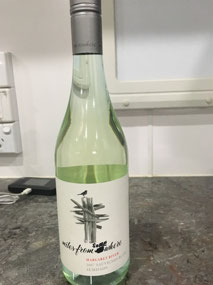
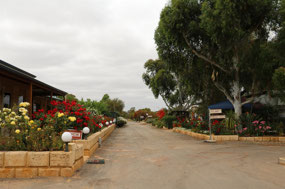
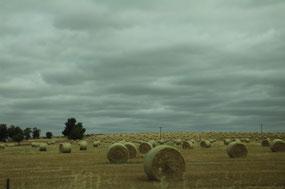
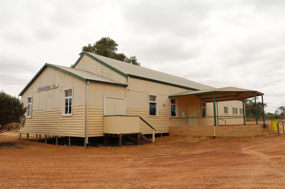

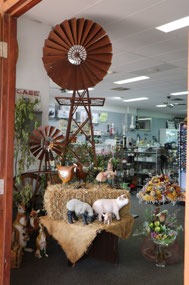
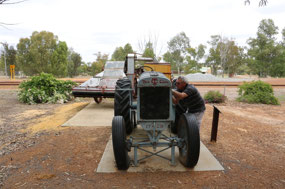
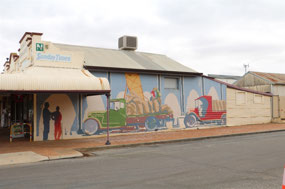
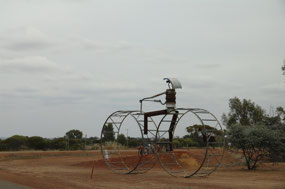
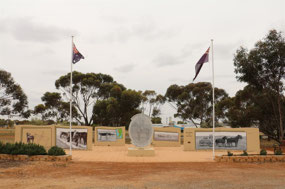
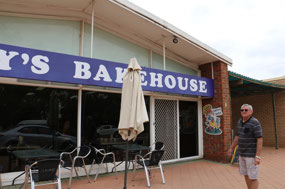
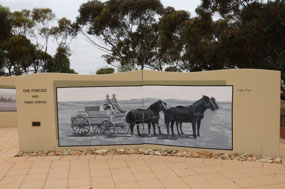
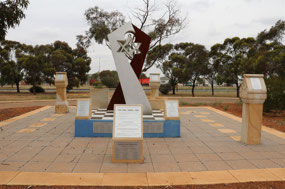
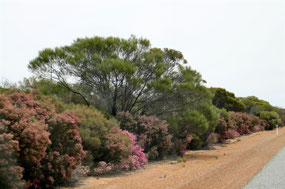
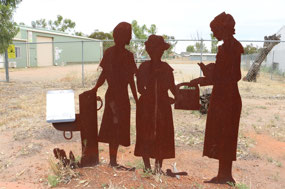
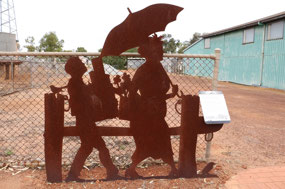

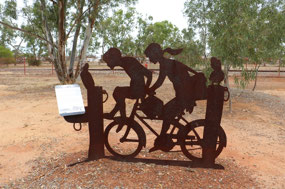
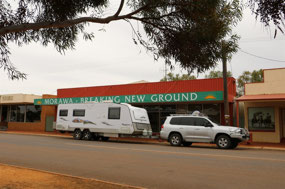
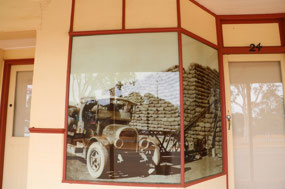
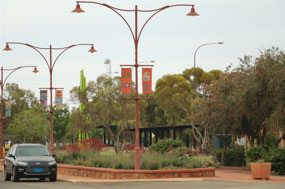
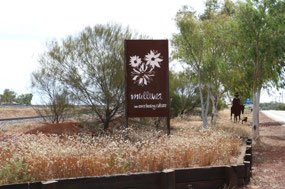

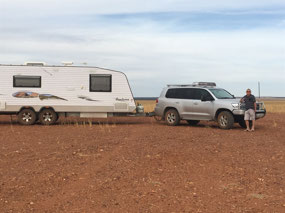
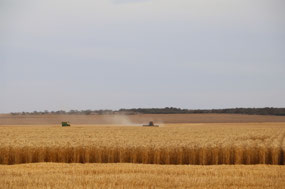
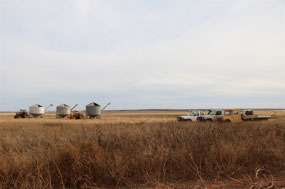
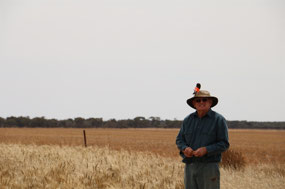
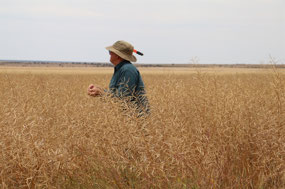
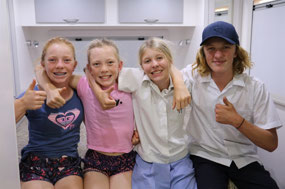
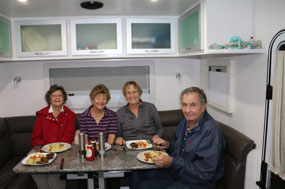
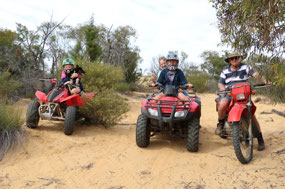
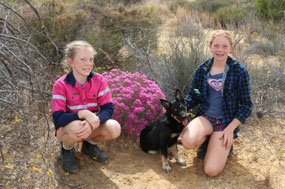
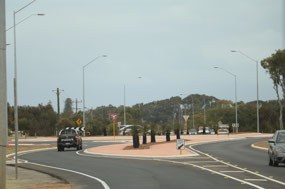
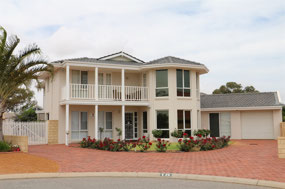
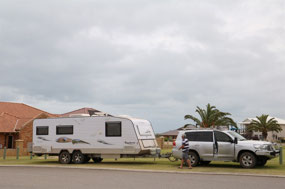
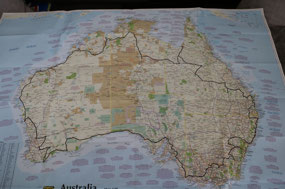

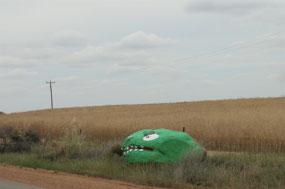
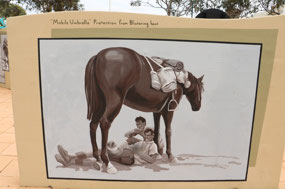
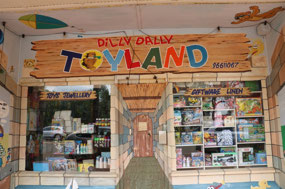
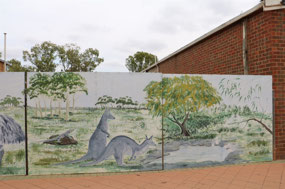
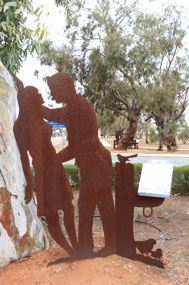
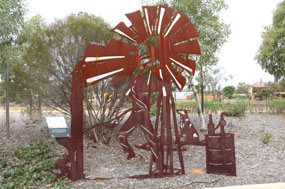
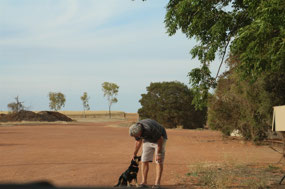
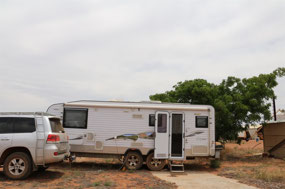
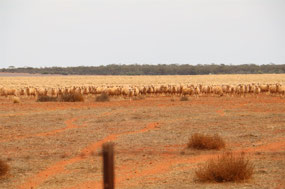
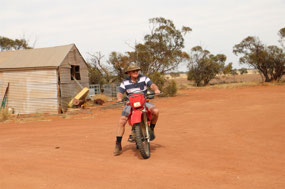
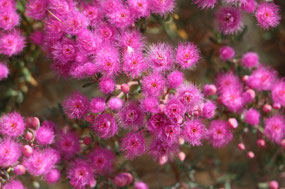
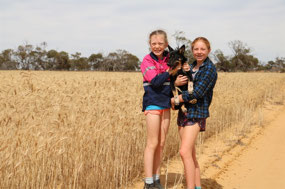
Heather
2018-11-12
The first shipment of iron ore went from Geraldton on the Margaret Maru and from memory it was March 1966. One day before you finalise your blog i will find it for you. We moved there in October 1964, prior to that dad travelled from Bullfinch to Morawa weekly on a much lesser quality road through Mukinbudin and up. Houses were transported on jinkers from Bullfinch to Morawa by Western Mining.
Jenny
2018-11-12
Yay! She's back! Will miss your blogs though. I'm one of those that commented lots cos I was enjoying your travels and wishing it was us. Glad that woman coming passed that truck saw you in time. Maybe a bit blase on a country road thinking no one would be coming along!! See you soon.
pamandpete
2018-11-12
We are sure glad that woman saw us too Jenny. She wasn't concentrating on the road and maybe a phone was her distraction! I thought of you Heather, and your Mum and Dad, when I was typing up that part of the Morawa story. There is so much hype about iron ore in the Pilbara and the huge tonnages being exported each year, that it was refreshing to read about Morawa, so close to home. I look forward to more details from you to add to the blog.